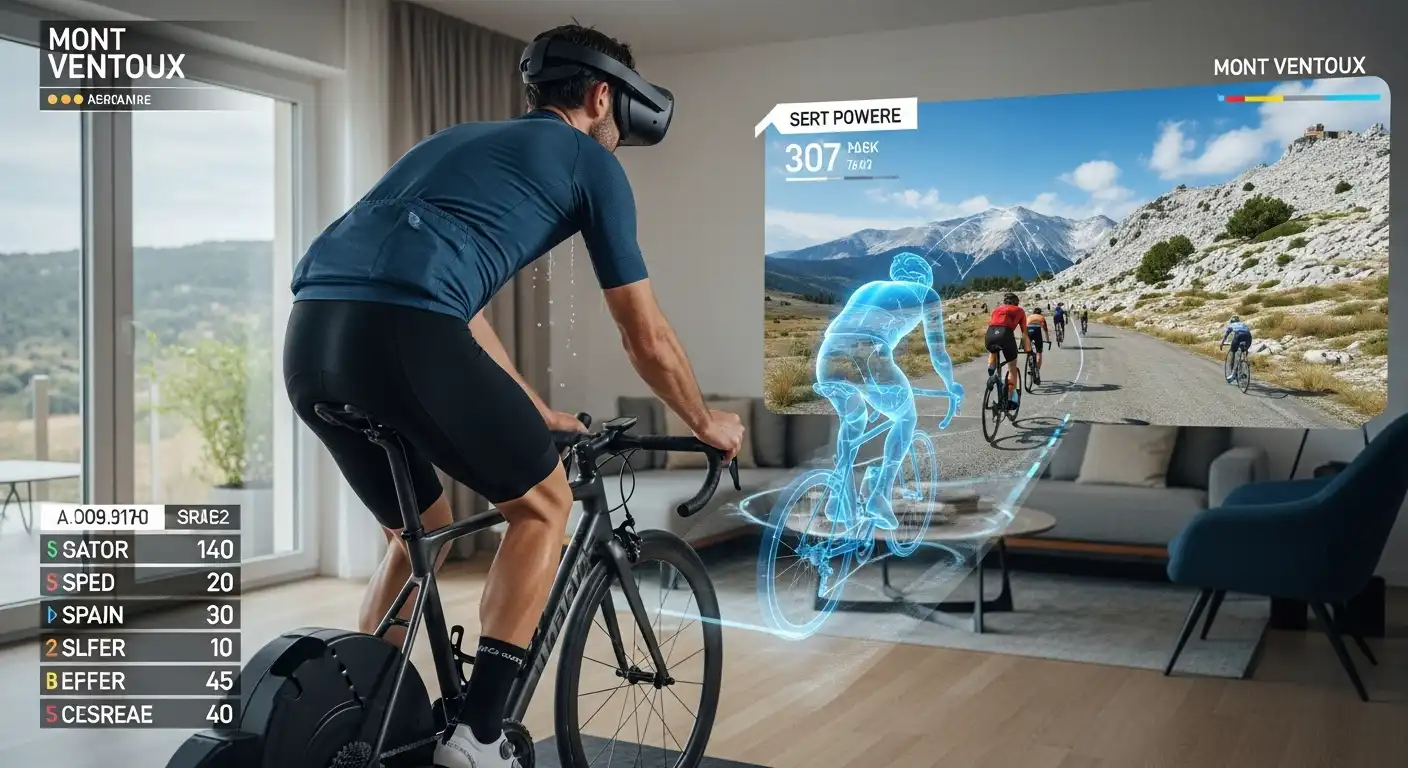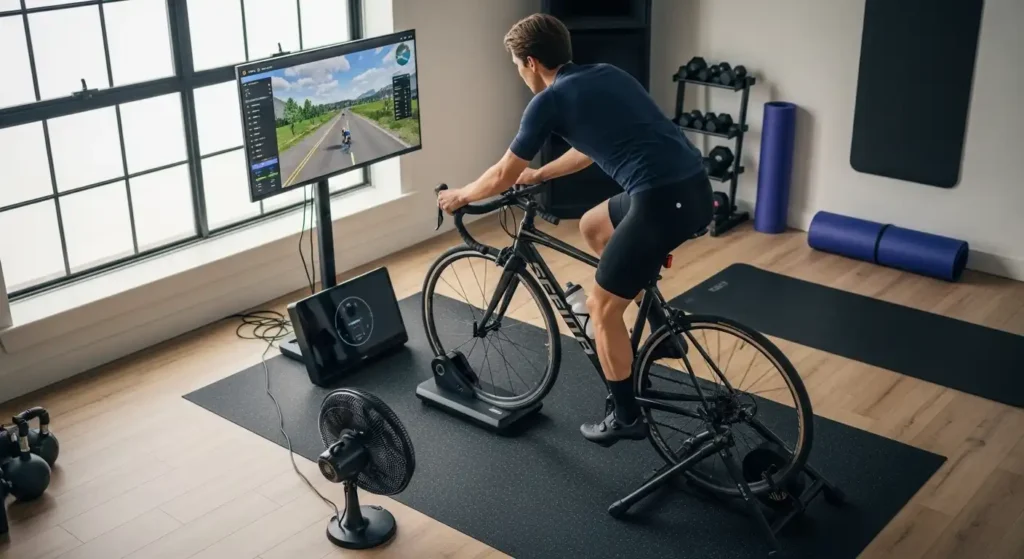Indoor cycling was once a niche activity, primarily used by competitive athletes during bad weather or off-season training. But the COVID-19 pandemic changed everything. When gyms closed and outdoor riding was restricted in many places, indoor cycling exploded in popularity. Riders discovered the convenience of smart trainers, immersive virtual apps, and online communities that brought structure and motivation to training. Now, years after the pandemic, indoor cycling remains one of the fastest-growing areas in the cycling world. This article explores the post-pandemic evolution of indoor cycling, current technology trends, and what the future holds for smart trainers.
The Pandemic Effect: From Stopgap to Lifestyle
During lockdowns, millions of riders around the world turned to indoor cycling platforms like Zwift, Rouvy, and TrainerRoad. According to market research firm Statista, the global indoor fitness equipment market grew by more than 50% between 2020 and 2022. What began as a substitute for outdoor riding became a long-term lifestyle for many cyclists. Riders learned that indoor cycling saves time, allows precise workouts, and reduces risks from traffic or weather.
Smart Trainers: The Technology Backbone
At the heart of the indoor cycling revolution are smart trainers — devices that replace or attach to a bike’s rear wheel, providing resistance that automatically adjusts based on virtual terrain or structured workouts. Unlike old “dumb trainers,” smart trainers are interactive, connecting via Bluetooth or ANT+ to apps that simulate real roads and deliver data-driven training plans.
Direct Drive vs. Wheel-On Trainers
- Direct Drive Trainers: The rear wheel is removed, and the bike mounts directly to the trainer. They offer superior accuracy, quieter operation, and realistic road feel. Popular models include the Wahoo KICKR and Tacx NEO.
- Wheel-On Trainers: The rear wheel stays on, and resistance is applied through a roller. They are more affordable but less accurate, often used by beginners or casual riders.
Key Features Defining Modern Smart Trainers
- Power measurement with accuracy within ±1%
- Automatic resistance adjustment tied to gradient and workouts
- Virtual flywheels that simulate momentum and terrain feel
- Low noise levels suitable for apartments
- Durability to withstand long-term high-intensity use
The Post-Pandemic Indoor Cycling Landscape
Today, indoor cycling is no longer seen as a second-choice option but an essential complement to outdoor training. Riders use smart trainers year-round for:
- Time efficiency: A 60-minute indoor workout can deliver the same training load as a longer outdoor ride.
- Structured training: Interval sessions are more controlled indoors.
- Safety: No risk of crashes with traffic or poor road conditions.
- Community: Online races, group rides, and challenges connect riders worldwide.

Trends in Indoor Cycling Technology (2025)
As we move deeper into 2025, several trends stand out in the indoor cycling space:
1. Immersive Virtual Platforms
Apps like Zwift and Rouvy continue to lead, but competition has driven innovation. Platforms now offer VR integration, AI-powered pacing partners, and “digital twins” of real-world races. Riders can virtually climb Mont Ventoux or join local club rides from their living rooms.
2. Gamification & Social Features
Indoor cycling platforms incorporate game-like elements: levels, achievements, in-game currency, and leaderboards. This approach keeps riders engaged and fosters long-term motivation. Social rides with chat functions and live events further bridge the gap between exercise and entertainment.
3. AI Coaching & Data Analytics
Artificial intelligence is now used to analyze rider data, recommend training adaptations, and even predict fatigue. Apps like TrainerRoad integrate AI-driven plans that adjust automatically based on rider feedback and performance.
4. Hardware Integration & Ecosystems
Smart trainers now connect seamlessly with heart-rate monitors, smart bikes, fans, and even environmental controls. Wahoo’s KICKR ecosystem includes trainers, fans that adjust airflow based on speed, and desk accessories — all controlled from a single app.
5. Affordability & Accessibility
As the market matures, costs are coming down. Entry-level smart trainers are more affordable than ever, making high-tech training accessible to a wider audience.
The Role of Smart Bikes
Beyond trainers, smart bikes are a growing segment. These fully integrated machines mimic road bike geometry and resistance without requiring a separate bike. They’re popular in homes with limited space and among riders who want a dedicated indoor setup. Brands like Wahoo, Tacx, and Peloton offer high-end models with adjustable geometry and customizable ride feel.
Health, Fitness, and Mental Benefits
Indoor cycling delivers measurable health outcomes. Riders report improved cardiovascular fitness, weight management, and lower stress levels. Importantly, virtual communities provide social connection, reducing feelings of isolation — a major benefit in the post-pandemic world. The Centers for Disease Control and Prevention (CDC) notes that cycling, indoors or outdoors, is one of the best activities for heart health and mental well-being.
Challenges & Limitations
Despite the benefits, indoor cycling is not without challenges:
- Monotony: Riding indoors can feel repetitive without engaging apps or structured plans.
- Equipment Costs: High-end trainers and smart bikes remain expensive.
- Space Requirements: Not all homes have room for permanent setups.
- Overtraining Risks: Riders sometimes push too hard in virtual races, leading to burnout.

Indoor Cycling Communities
The growth of online cycling clubs and communities has been a game-changer. Virtual clubs allow riders to schedule group rides, hold training competitions, and even simulate charity rides. Platforms like Zwift host virtual versions of professional races, where amateurs can compete alongside pros in parallel formats.
Future Outlook: Where Indoor Cycling Is Headed
Looking forward, several innovations are likely to shape the next decade of indoor cycling:
- Haptic feedback: Trainers that simulate cobblestones, gravel, or uneven terrain.
- Smarter wearables: Integration of smart glasses or AR to overlay training data.
- Subscription bundles: Combining fitness apps, coaching, and entertainment in one package.
- Corporate wellness programs: Employers offering indoor cycling subscriptions for health benefits.
- Environmental sustainability: Energy-harvesting trainers that feed electricity back into the grid.
Indoor Cycling Tips for Beginners
If you’re new to smart trainers, here are tips to maximize your experience:
- Invest in a good fan — indoor cycling generates more heat than outdoor riding.
- Use a mat to protect floors and reduce vibration noise.
- Experiment with different apps to find one that motivates you.
- Calibrate your trainer regularly for accurate power readings.
- Stay hydrated — you sweat more indoors.
Case Studies: How Riders Are Adapting
Case Study 1: Amateur Racer – A competitive cyclist in New York used Zwift during the pandemic and continues to train indoors for high-intensity intervals. He reports better outdoor performance thanks to precise indoor workouts.
Case Study 2: Busy Parent – A parent of two in London discovered that indoor cycling allows her to train early mornings without leaving home. She values the time efficiency and the ability to multitask with childcare.
Case Study 3: Corporate Wellness – A tech company in California now offers indoor cycling subscriptions as part of employee wellness benefits. Participation rates are high, with staff citing improved health and reduced stress.
Conclusion
Indoor cycling and smart trainers have come a long way since the pandemic. What started as a necessity has become a lasting fitness revolution. With immersive technology, connected communities, and ongoing hardware improvements, indoor cycling is here to stay. For both casual riders and competitive athletes, the post-pandemic landscape offers unprecedented opportunities to train smarter, safer, and more effectively from home.

